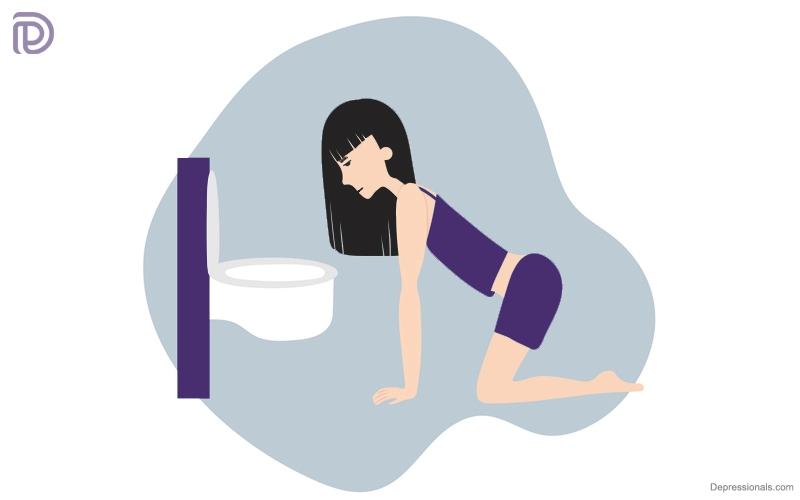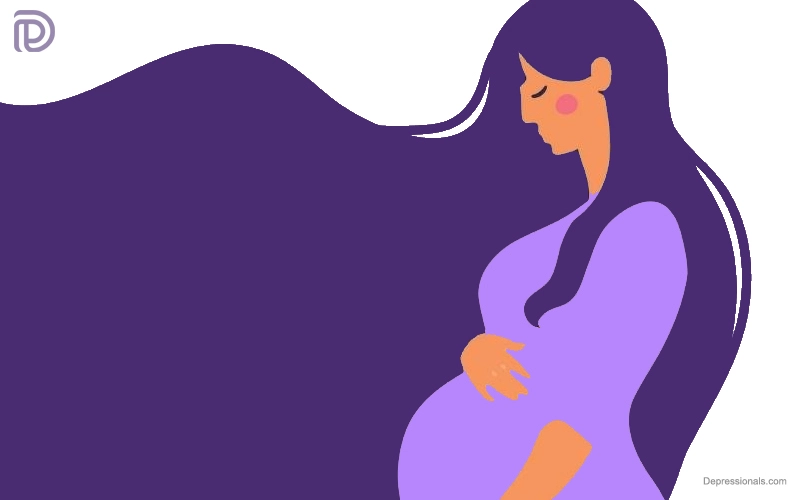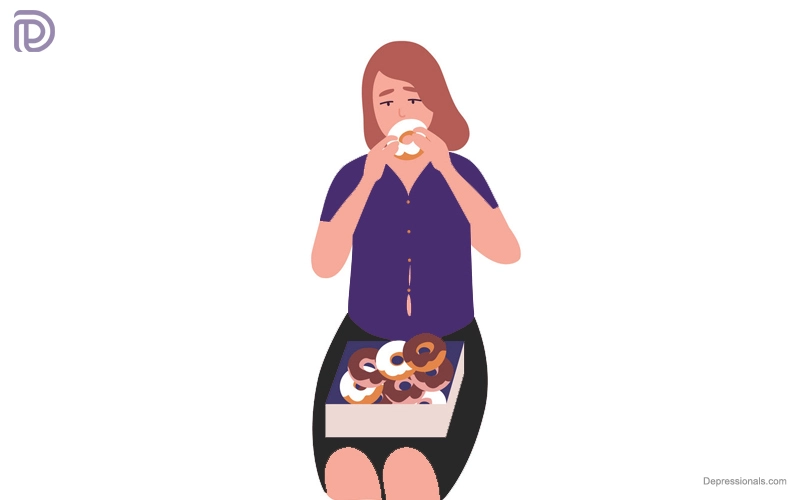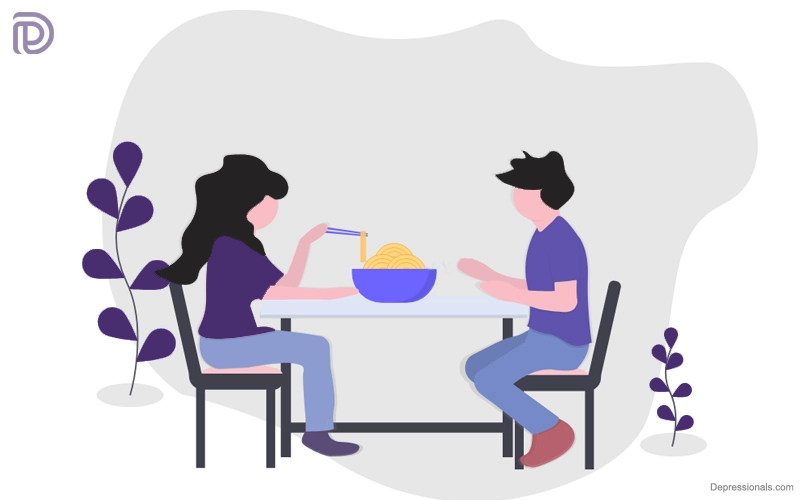Purging disorder is an eating disorder in which people engage in “purging” behavior in an attempt to lose weight or change their body shape. Purging can refer to a variety of things, such as:
- Self-induced vomiting
- Usage of laxatives or medicines without a prescription
- Excessive exercise
- Fasting
Purging disorder is a confirmed eating disorder that isn’t as well-known as other eating disorders. An “Other Specified Feeding or Eating Disorder” is what it’s called.
It’s important to remember that eating disorders are among the most dangerous mental disorders. They can be dangerous to one’s bodily and mental health.
Remember that you are not alone if you are suffering from an eating disorder, and that assistance is always accessible.
Read: Avoidant Restrictive Food Intake Disorder
Purging disorder vs. Bulimia
Bulimia is a significant eating disorder that usually exhibits itself as a cycle of binge eating followed by purging.
While both bulimia and purging disorder involves purging habits, the key distinction between the two is that bulimia is accompanied by a compulsion to binge eat.
Purging disorder is characterized by purging activities that are not in reaction to a binge-eating event.
Purging disorder symptoms
Purging disorder is a recognized eating disorder with many of the same symptoms as other eating disorders. Among the signs and symptoms are:
- Purging habits to reduce weight on a regular basis, such as:
- Self-induced vomiting
- Misuse of a laxative or diuretic
- Misuse of enemas
- Fasting
- Excessive exercise
- Substantial hardship or disturbance in social, professional or personal life
- Obsession with losing weight or fear of gaining weight
- Difficulties with self-esteem body shape or weight have a big impact
An eating problem may affect anyone of any shape or size. This is why it’s critical to detect the signs and symptoms early on before your health is jeopardized.
You may take an online self-assessment if you suspect you or a loved one may have an eating problem to see if you have any habits that could lead to an eating disorder.
However, it’s crucial to remember that these tests do not constitute a diagnosis. Consult your doctor if you believe you have an eating disorder.
Read: Pica in Pregnancy
Who is affected by this?
Purging disorder is a type of eating disorder that can affect anyone, despite the following factors:
- Age
- Sex
- Race
- Ethnicity
- Sexual preference
The stereotype that eating disorders primarily affect adolescent females is both false and harmful. This perception can prevent people from getting therapy.
The findings of the research
Certain variables may play a role in why some persons have a greater incidence of eating disorders than others.
Potential risk factors include sexual and physical abuse, as well as participation in beauty or weight-focused sports.
While studies show that eating disorders are more frequent in late childhood and adolescents, eating disorders can strike at any point in life.
Eating disorders can affect men as well. According to a recent study, at least 25% of patients with eating problems are men. Furthermore, eating disorders such as purging disorder are rising at a higher pace in men than in women.
People who suffer from an eating problem are more prone to suffer from another mood disorder as well. According to one research, up to 89 percent of people with eating problems also suffer from mental disorders, such as:
Eating disorders are not a choice; they are a serious mental health issue. Getting help is not anything to be ashamed about.
Read: Rumination Disorder
Purging disorder treatments
Purging disorder treatment varies from person to person. Some people may benefit from intensive treatment and recovery programs, while others may choose outpatient therapy.
When medical monitoring or daily evaluations are required, inpatient therapy is more usual. Psychotherapy and dietary counseling may be used in outpatient treatment.
Purging condition is not treated with medications. Rather, they may be given to treat coexisting mental disorders that are adding to the stress or making recovery more difficult. Discuss your drug choices with your doctor.
Read: How to Stop Late Night Eating
Side effects
Purging disorder can have a number of negative health consequences, including:
- Feeling dizzy
- Tooth decay
- Throat swelling
- Swelling on the face
- Mood swings
- Cardiac issues such as abnormal heartbeat and others
- Scarred hands
- Pregnancy complications
- Kidney failure
- Constipation or digestive problems
- Dehydration
- Nutrient deficiencies
- Chemical or electrolyte imbalances
Self-induced vomiting can potentially cause long-term harm to other parts of your body, including:
- Teeth
- Esophagus
- Digestive system
- Cardiovascular system
Read: 15 Simple Tips to Stop Binge Eating
How to find help
If you or someone you know suffers from purging disorder, you can take the following steps:
- For resources, treatment choices and support, call the National Eating Disorders Association hotline.
- For anyone who does not have exposure to inpatient treatment or counseling, there are free or low-cost support options available.
It’s important to remember that eating disorders are significant mental health issues, not a matter of willpower. Don’t be embarrassed to seek therapy or extra assistance and remember that you’re not alone.
Seek help: Mental Help Resources
Recovery
It is possible to recover from an eating disorder, but it takes time. Throughout your recuperation, be patient with yourself. Healing is a lifelong process that is unique to each individual.
To boost your recovery, consider continuing counseling, journaling or joining a support group. Relapses are inevitable, but they do not make you a failure. There is always someone who can assist you in getting back on track.
The bottom line
Purging disorder is a significant mental illness that is characterized by purging in cycles in an attempt to control weight or body shape. Purging can take many various forms, all of which can result in significant nutritional and metabolic imbalances, as well as long-term health consequences.
It’s critical to get treatment for purging disorder as soon as possible, whether it’s through a support group or more extensive therapy.
While recovery from an eating problem is a long-term journey, living a happy and healthy life is entirely achievable. The objective is to re-establish a healthy relationship between you and your body. Remember that asking for help is the first step in breaking the purging cycle.






It’s an amazing paragraph in favor of all the internet users; they
will get advantage from it I am sure.
I am really impressed with your writing skills as well as with
the layout on your weblog. Is this a paid theme or did you modify it
yourself? Either way keep up the nice quality writing,
it is rare to see a nice blog like this one nowadays.
Thank you for any other informative website. Where else may I get that type of info written in such a perfect manner? I’ve a venture that I am just now running on, and I’ve been at the glance out for such information.
Many thanks for sharing your opinions on this website.
Helpful info. Fortunately for me I discovered your website by chance, and I am stunned why this accident didn’t happened earlier! I bookmarked it.
Thanks for this article. I might also like to say that it can become hard when you are in school and just starting out to create a long credit history. There are many students who are just simply trying to make it through and have long or good credit history can occasionally be a difficult element to have.
I really appreciate this post. I have been looking all over for this! Thank goodness I found it on Bing. You’ve made my day! Thx again
As a Newbie, I am constantly browsing online for articles that can help me. Thank you
In any event I did enjoy reading through it.
Well I definitely liked reading it. This article offered by you is very helpful for accurate planning.
Another thing I have really noticed is the fact for many people, less-than-perfect credit is the reaction of circumstances beyond their control. For instance they may be really saddled with illness so they really have more bills for collections. It could be due to a job loss and the inability to go to work. Sometimes divorce process can truly send the funds in a downward direction. Thanks for sharing your notions on this blog.
Another thing I have noticed is always that for many people, less-than-perfect credit is the reaction of circumstances over and above their control. One example is they may are already saddled by having an illness and as a consequence they have excessive bills for collections. It could be due to a work loss or even the inability to go to work. Sometimes divorce process can really send the financial situation in the wrong direction. Thank you for sharing your opinions on this site.
Greetings! I know this is kinda off topic however I’d figured I’d ask. Would you be interested in trading links or maybe guest writing a blog article or vice-versa? My website discusses a lot of the same topics as yours and I feel we could greatly benefit from each other. If you happen to be interested feel free to send me an email. I look forward to hearing from you! Great blog by the way!
Valuable information. Lucky me I found your web site by accident, and I am shocked why this accident did not happened earlier! I bookmarked it.
Hello there, just became aware of your blog through Google, and found that it is really informative. I am going to watch out for brussels. I will appreciate if you continue this in future. Many people will be benefited from your writing. Cheers!
Hello there, just turned into aware of your weblog via Google, and located that it is truly informative. I抦 gonna watch out for brussels. I抣l be grateful if you proceed this in future. Numerous other people will likely be benefited out of your writing. Cheers!
Thanks a lot for sharing this with all people you actually understand what you’re talking about! Bookmarked. Please additionally seek advice from my site =). We will have a link trade contract between us!
Thanks for your publication.
You actually make it seem so easy with your presentation but I find this topic to be really something which I think I would never understand. It seems too complex and extremely broad for me. I’m looking forward for your next post, I’ll try to get the hang of it!
Woah! I’m really digging the template/theme of this website. It’s simple, yet effective. A lot of times it’s difficult to get that “perfect balance” between usability and appearance. I must say that you’ve done a awesome job with this. Additionally, the blog loads extremely quick for me on Chrome. Excellent Blog!
One thing I’ve noticed is that there are plenty of myths regarding the financial institutions intentions if talking about property foreclosures. One fairy tale in particular would be the fact the bank would like your house. Your banker wants your hard earned money, not the home. They want the bucks they lent you with interest. Averting the bank will only draw any foreclosed summary. Thanks for your publication.
Great post. I was checking constantly this weblog and I am inspired! Very helpful information specially the final section 🙂 I care for such info a lot. I was looking for this particular information for a very long time. Thank you and best of luck.
Hello there! I know this is kinda off topic but I was wondering if you knew where I could get a captcha plugin for my comment form? I’m using the same blog platform as yours and I’m having problems finding one? Thanks a lot!
Another thing is that when looking for a good on the net electronics retail outlet, look for web stores that are constantly updated, always keeping up-to-date with the latest products, the top deals, plus helpful information on products. This will make certain you are getting through a shop that really stays ahead of the competition and give you what you should need to make intelligent, well-informed electronics acquisitions. Thanks for the significant tips I’ve learned from your blog.
Simply desire to say your article is as surprising. The clarity in your post is just excellent and i could assume you’re an expert on this subject. Fine with your permission allow me to grab your feed to keep up to date with forthcoming post. Thanks a million and please continue the rewarding work.
I will right away seize your rss as I can not in finding your email subscription link or newsletter service. Do you’ve any? Please let me recognize so that I could subscribe. Thanks.
Whats up very cool web site!! Guy .. Excellent .. Wonderful .. I’ll bookmark your site and take the feeds also厈I am satisfied to search out a lot of useful information here within the put up, we’d like work out extra techniques on this regard, thanks for sharing. . . . . .
I was suggested this blog by my cousin. I am not sure whether this post is written by him as no one else know such detailed about my difficulty. You are amazing! Thanks!
What i do not realize is actually how you are not actually much more well-liked than you may be right now. You are so intelligent. You realize therefore significantly relating to this subject, made me personally consider it from so many varied angles. Its like women and men aren’t fascinated unless it’s one thing to do with Lady gaga! Your own stuffs great. Always maintain it up!
Thanks a lot for your post. I’d like to comment that the price of car insurance varies from one plan to another, mainly because there are so many different facets which contribute to the overall cost. By way of example, the brand name of the auto will have a massive bearing on the charge. A reliable older family car will have a lower priced premium than the usual flashy fancy car.
I do agree with all the ideas you’ve presented for your post. They are really convincing and can definitely work. Nonetheless, the posts are very brief for newbies. May just you please prolong them a little from next time? Thanks for the post.
Usually I don’t read post on blogs, but I would like to say that this write-up very forced me to try and do it! Your writing style has been surprised me. Thanks, quite nice post.
One other thing to point out is that an online business administration training is designed for people to be able to effortlessly proceed to bachelors degree programs. The Ninety credit education meets the lower bachelor college degree requirements so when you earn your own associate of arts in BA online, you will get access to up to date technologies on this field. Several reasons why students want to get their associate degree in business is because they are interested in this area and want to receive the general instruction necessary in advance of jumping in a bachelor diploma program. Thx for the tips you provide in the blog.
What¦s Taking place i am new to this, I stumbled upon this I’ve discovered It positively useful and it has helped me out loads. I hope to contribute & help other customers like its helped me. Good job.
Detailed written.